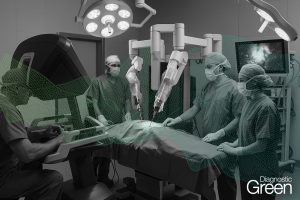Background: Extended right posterior sectionectomy is an alternative to right hepatectomy (RH) for tumors located mainly in the right posterior section (RPS) and partially in the right anterior section (RAS). Anatomical extended right posterior sectionectomy (AERPS) combining RPS and right anterior subsegmental resections not only achieves anatomical hepatectomy to reduce remnant liver ischemia but also preserves more functional liver parenchyma than RH. AERPS can be extremely challenging, especially under laparoscopy.
Patient and methods: A 48-year-old male was admitted to our institution for a tumor in the right liver. The three-dimensional (3D) model revealed that the subsegments innervated by the P5dor and the P8lat could cover the territory of the tumor in the RAS.Therefore, laparoscopic AERPS was performed. First, an intrafascial approach was adopted to dissect and ligate the right posterior Glissonean pedicle. Then, we used intraoperative ultrasound and virtual liver segment projection by Laparoscopic Hepatectomy Navigation System4 to identify the intersegmental fissure between the dorsal and ventral segments of S5. Partial parenchymal transection was used to reach the common stem of G5dor and G8lat. Finally, using indocyanine green (ICG) negative staining fluorescence imaging, the precise transection interface was determined.
Results: The operation lasted 360 min with 100 ml of intraoperative blood loss. There were no postoperative complications, and the patient was discharged after 3 days.
Conclusion: Laparoscopic AERPS is technically feasible and can be performed with greater precision coupled with virtual liver segment projection and ICG fluorescence imaging.




